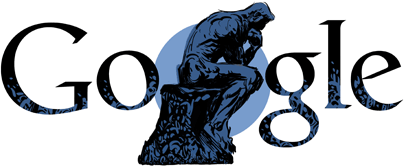Finding a New Source For Reading
My first decision was, that I did not want to switch to another RSS Reader, cause RSS is no longer available everywhere. Twitter, which I use some times dropped RSS and Facebook, which I don't use, also dropped RSS. But both provide simple JSON powered API's to get the news. Google+ never provided a RSS feed and in the beginning some other users complained and setup solutions, but none of them grew much.
Changing my Reading Habits in Google+
I had mainly used Google+ for my social input, but I was following too many people and pages and therefore I decided to rearrange my circles. I had realized, that I was using the Google+ communities more and more. So it was easy to drop a lot of circles, that I had added just for Python, Javascript, Appengine, Googlers, Journalists, News sources and a lot more.
Fortunately I had created one circle, that I have called Read and most people, that I really wanted to follow on G+, were in this circle. So one day, I dropped nearly all other circles and my following dropped from > 4500 to around 180 followings. I decided to follow a few more Google+ communities to be in contact with Javascripters, Python users and some others. The great thing about the communities is the fact, that the people in the community mostly talk about a topic or even about subtopics. People in communties mostly talk about the topic and I do not see all the other postings that everyone usually shares, do not come up in stream. For my main communities, were I really want to participate I have checked the notifications checkbox, so I always get a notification, when new content arrives. For the other communities I just used the standard settings, so every now and then some posts pop up in my regular stream.
I have switched the settings of my Read circle to max, so they all show up in the main stream. Then I created some more circles. One for all the Google Services I follow, one for Tech Pages and one for stuff, I regularly want to check out. But I switched off the checkbox "Show posts in home stream" so none of the postings show up in my stream. These circles mainly consist of Google+ pages and only some Google profiles. Because I had the impression, that pages are used more as output for blogs or magazines or are specific about one topic.
With these settings I have a very clear and not very noisy home stream. Once per day I can just check the other circles, if I have the time to read some more on Google+. I get notifications for my main communities and even get some posts from all other communities.
 The positive part is, that I see a lot more posts from people I really want to read regularly and I have the impression, that I can easily watch the communities. Reading my special circles feels a little bit like a RSS reader. So I have most of my source in one place and it is easy to handle and easy to read. On the negative side the only things, that I miss, is better search, faster scanning through more postings and something like an archive or read flag, so posts do not show up, when I have read them already.
The positive part is, that I see a lot more posts from people I really want to read regularly and I have the impression, that I can easily watch the communities. Reading my special circles feels a little bit like a RSS reader. So I have most of my source in one place and it is easy to handle and easy to read. On the negative side the only things, that I miss, is better search, faster scanning through more postings and something like an archive or read flag, so posts do not show up, when I have read them already.But overall I am quite happy with my new Google+ reading habits.





















